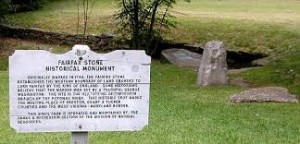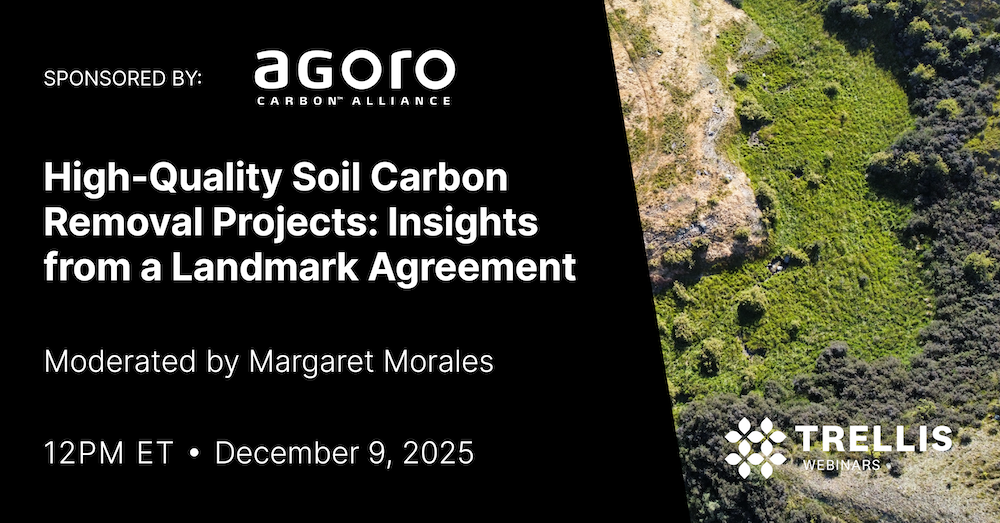Habitat restoration can be the key to a healthy wildlife presence on your property – WV MetroNews

Report on Habitat Restoration Initiatives in West Virginia and Alignment with Sustainable Development Goals
1.0 Executive Summary
A recent seminar in Putnam County, West Virginia, highlighted that degraded habitat is a primary obstacle to effective game and non-game wildlife management in the state. Experts from organizations including Quail Forever and Cornerstone Habitat and Land Management presented strategies focused on habitat restoration. These strategies not only address local ecological concerns but also align directly with several United Nations Sustainable Development Goals (SDGs), particularly SDG 15 (Life on Land). The core challenges identified were the lack of suitable habitat cover and the proliferation of invasive, non-native plant species. The proposed solutions center on creating diverse, early successional habitats and managing land to benefit a wide array of species, thereby contributing to biodiversity and ecosystem resilience.
2.0 Primary Challenges to Terrestrial Ecosystems (SDG 15)
The report identifies two critical challenges that impede the health of terrestrial ecosystems in West Virginia, directly impacting the targets within SDG 15.
- Habitat Degradation and Loss: A significant lack of adequate habitat structure is a primary limiting factor for many wildlife populations. For species such as the Bobwhite quail, this manifests as a deficiency in three essential types of cover:
- Nesting Cover
- Brood-Rearing Cover
- Escape Cover
- Proliferation of Invasive Alien Species (Target 15.8): The management of invasive, non-native flora is a critical component of any habitat restoration effort.
- Invasive species aggressively outcompete native plants, consuming space and resources essential for local wildlife.
- Many invasive plants, such as autumn olive, were introduced with good intentions but have since caused significant ecological disruption by choking out native vegetation critical to the life cycles of indigenous species.
- Proactive and continuous management is essential to prevent invasive species from dominating the landscape.
3.0 Strategic Restoration and Management Approaches
To counter these challenges, a multi-faceted approach to land management was proposed, emphasizing ecological diversity and sustainability.
3.1 Creation of Multi-Benefit Habitats
The establishment of pollinator fields and early successional habitats is a cornerstone of the recommended strategy. These habitats are not species-specific and provide broad ecological benefits, supporting a diverse range of wildlife. This holistic approach ensures that efforts to support one species, such as the Monarch butterfly (a species of concern), also create valuable resources for others, including:
- Bobwhite Quail
- Meadow Larks
- White-tailed Deer
- Honey Bees and other pollinators
3.2 Integrated Ecosystem Management
The principle of integrated management suggests that focusing on the needs of one indicator species can create a positive ripple effect across the entire ecosystem. Management for quail, for instance, inherently creates early successional and “edge” habitats that are highly beneficial for numerous other game and non-game species, including turkey and deer. This approach is more effective than isolated interventions like single-species food plots.
3.3 Sustainable Land Use Conversion
A key recommendation involves land use conversion. Instead of costly and narrowly focused food plots, landowners are encouraged to convert marginal agricultural lands, such as underproductive hayfields, into native grasslands and pollinator habitats. This is presented as a more cost-effective and ecologically superior strategy for long-term wildlife management and biodiversity enhancement.
4.0 Direct Contributions to Sustainable Development Goals (SDGs)
The habitat restoration initiatives detailed in this report make significant contributions to the global sustainability agenda.
-
SDG 15: Life on Land
This goal is central to the entire initiative. The work directly addresses several of its targets:
- Target 15.1 (Conserve and Restore Terrestrial Ecosystems): All activities, from planting native grasses to creating pollinator fields, are aimed at restoring and promoting the sustainable use of West Virginia’s terrestrial ecosystems.
- Target 15.5 (Halt Biodiversity Loss): By creating diverse habitats that support a wide range of flora and fauna, these projects take significant action to reduce the degradation of natural habitats and protect at-risk species.
- Target 15.8 (Control Invasive Alien Species): The explicit focus on identifying, managing, and controlling invasive plants is a direct implementation of this critical target.
-
SDG 17: Partnerships for the Goals
The success of these efforts relies on strong collaboration. The project exemplifies this goal by uniting:
- Non-Governmental Organizations (Quail Forever, Pheasants Forever)
- Government Agencies (U.S. Department of Agriculture)
- Private Sector Companies (Cornerstone Habitat and Land Management)
-
SDG 13: Climate Action
While not a primary focus, these land management practices offer climate co-benefits. The restoration of native grasslands and forest edge habitats enhances carbon sequestration in soils and biomass, contributing to climate change mitigation and building more resilient ecosystems.
SDGs Addressed or Connected to the Issues Highlighted in the Article
SDG 15: Life on Land
- The article is fundamentally centered on SDG 15, which aims to “protect, restore and promote sustainable use of terrestrial ecosystems… and halt biodiversity loss.” The entire discussion revolves around addressing “poor habitat” for wildlife in West Virginia, which is a core component of protecting and restoring terrestrial ecosystems.
- Specific efforts mentioned, such as the “restoration of wildlife habitat,” creating “pollinator fields,” and establishing “early successional habitat,” directly contribute to the goals of SDG 15.
- The article highlights the importance of biodiversity by explaining that habitat improvements for one species, like quail, benefit a wide range of other wildlife, including “Monarch butterflies,” “Meadow Larks,” “deer,” and “turkeys.”
- A major theme is combating threats to local ecosystems, particularly the challenge of “invasive, non-native flora” that are “choking out native grasses or bushes,” which aligns with the goal of halting biodiversity loss and restoring degraded land.
Specific SDG Targets Identified Based on the Article’s Content
-
Target 15.1: Ensure the conservation, restoration and sustainable use of terrestrial and inland freshwater ecosystems and their services.
The article directly addresses this target through its focus on active habitat restoration. The work of organizations like Quail Forever and Cornerstone Habitat and Land Management, which involves “putting in a pollinator plot” and converting “marginal hayfields… over to natives,” is a clear example of restoring terrestrial ecosystems to improve their health and the services they provide for wildlife.
-
Target 15.5: Take urgent and significant action to reduce the degradation of natural habitats, halt the loss of biodiversity and, by 2020, protect and prevent the extinction of threatened species.
This target is relevant as the article’s primary motivation is to reverse the degradation of natural habitats (“poor habitat”). The efforts are aimed at halting the loss of biodiversity by creating environments that support a variety of species. The text specifically mentions that the work benefits “Monarch butterflies which is a species of concern,” directly linking the actions to the protection of vulnerable species.
-
Target 15.8: By 2020, introduce measures to prevent the introduction and significantly reduce the impact of invasive alien species on land and water ecosystems and control or eradicate the priority species.
The article heavily emphasizes this target by identifying invasive species as “one of the biggest difficulties for restoring habitat.” It explicitly states that “invasive species management is a critical component to any type of wildlife habitat” and describes how these species “are eating up the space that would otherwise be good habitat for all wildlife.” The mention of a botanist identifying “at least ten non-native plants” in a small area underscores the urgency of controlling these species.
Indicators Mentioned or Implied in the Article
-
Indicator for Target 15.1: Area of land restored.
The article implies that progress can be measured by the amount of land actively improved. Phrases like converting “marginal hayfields” and installing habitats in “odd areas” on farms suggest that the area of restored land is a key metric for success.
-
Indicator for Target 15.5: Population status of key species.
The article implies that the health and presence of various species serve as an indicator of success. The text notes that restored habitats are used by “Bobwhite quail,” “Meadow Larks,” “deer,” “turkeys,” and “Monarch butterflies.” An increase in the populations or diversity of these species in restored areas would be a direct measure of progress towards halting biodiversity loss.
-
Indicator for Target 15.8: Reduction in the coverage of invasive alien species.
The article suggests that progress can be measured by the identification and control of invasive plants. The statement that a botanist “had identified at least ten non-native plants” points to identification as a first step. The goal to “manage the habitat and keep an eye on it” to “stay ahead” of invasives implies that a successful outcome would be a reduction in the area dominated by these species, allowing native plants to thrive.
Summary Table of SDGs, Targets, and Indicators
| SDGs | Targets | Indicators (Mentioned or Implied in the Article) |
|---|---|---|
| SDG 15: Life on Land | 15.1: Ensure the conservation, restoration and sustainable use of terrestrial and inland freshwater ecosystems and their services. | The area of land restored (e.g., converting “marginal hayfields” into native habitats). |
| SDG 15: Life on Land | 15.5: Take urgent and significant action to reduce the degradation of natural habitats, halt the loss of biodiversity and… protect and prevent the extinction of threatened species. | The population status and diversity of key wildlife species, including species of concern like the Monarch butterfly and Bobwhite quail. |
| SDG 15: Life on Land | 15.8: …significantly reduce the impact of invasive alien species on land and water ecosystems and control or eradicate the priority species. | The number of invasive species identified and the reduction in the area covered by them, allowing native plants to recover. |
Source: wvmetronews.com

What is Your Reaction?
 Like
0
Like
0
 Dislike
0
Dislike
0
 Love
0
Love
0
 Funny
0
Funny
0
 Angry
0
Angry
0
 Sad
0
Sad
0
 Wow
0
Wow
0













































































